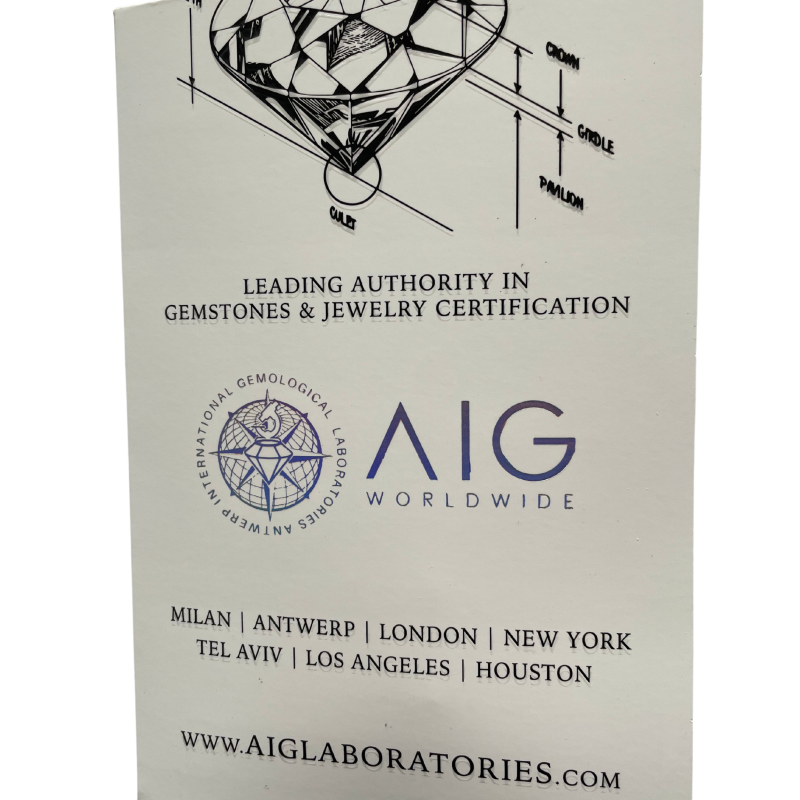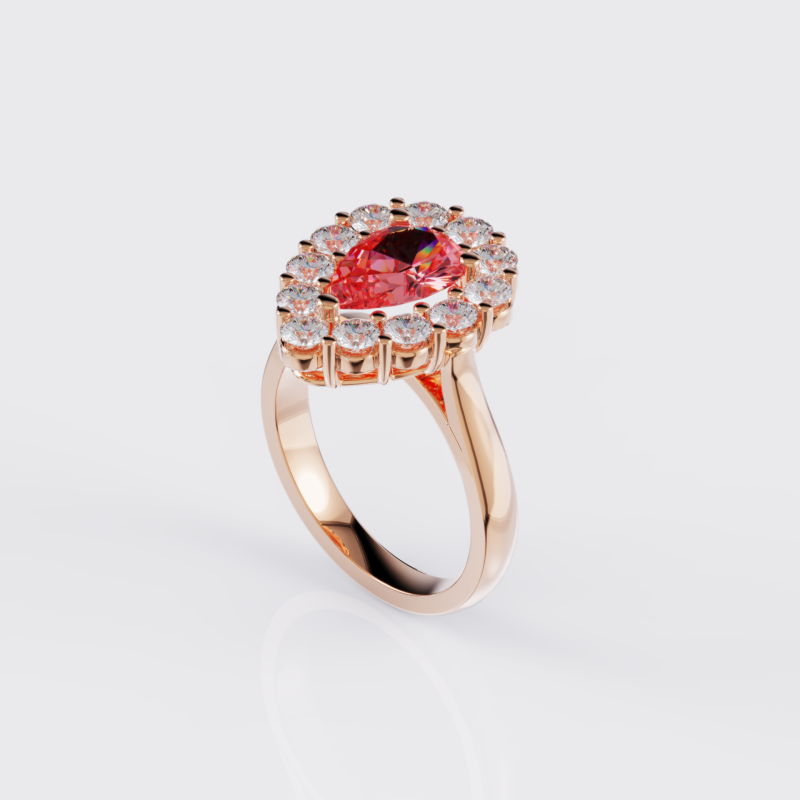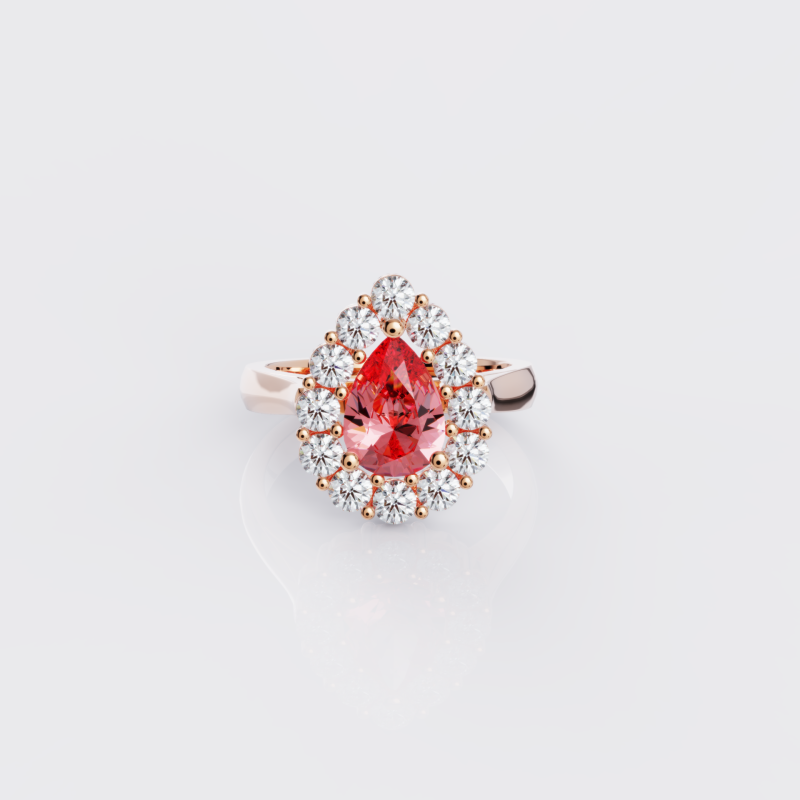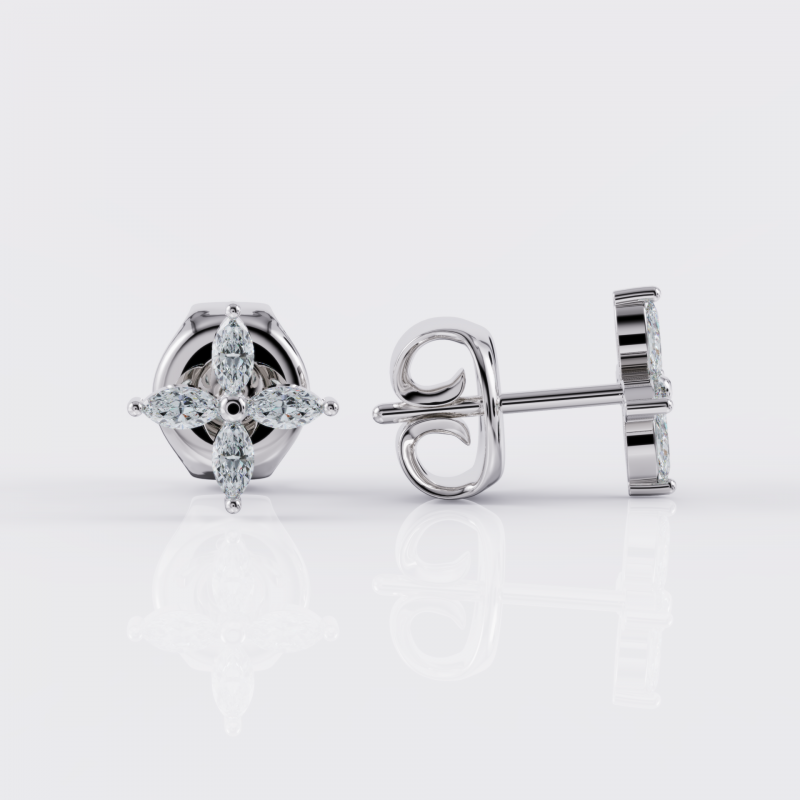Moissanite is the name of the mineral form of silicon carbide, SiC and it’s one of the brightest, hardest, toughest, and most elegant gems of modern jewelry. And yes, it shines more than a diamond. But not only.
Moissanite exists in Nature but is extremely scarce and small and its occurrence is linked to meteorites that impacted earth, earning the nickname of “stardust”. Surely for this reason it was not discovered until the nineteenth century. Moissanite used in jewelry is lab-grown and has the same composition, chemical and physical properties as its natural counterpart. In appearance, it looks like a diamond but shines brighter, giving moissanite jewelry a luxurious appearance typical of high-quality diamond jewelry. It can be presented in colorless version or in some colors such as yellow, blue, gray or green. Moissanite can also be found in other colors, but they are not permanent (i.e. pink).
Unbeatable brilliance, irresistible sparks
The term brilliance refers to the ability of a gemstone to capture and reflect light. The higher the refractive index, the higher the brilliance of the gemstone. Moissanite has a refractive index of 2.65 to 2.69, while diamond has 2.42; that is, moissanite shines brighter than diamond. Fire is the dispersion or spectral separation of the white light into rainbow flashes. The more the dispersion, the more colorful sparks. Moissanite has 2.5 times the fire of a diamond. Last, luster or scintillation is the flashes of light or shine you see when a gemstone moves in the light. Again, moissanite luster’s rating is superior.
These are the qualities that determine the beauty of a jewel. This makes moissanite objectively more beautiful than a diamond.
| Beauty | Durability | ||||
| Fire or dispersion | Refractive Index | Luster | Relative hardness (Mohs scale) or scratch resistance | Toughness or impact resistance | |
| Moissanite | 0.104 | 2.65 – 2.69 | 20.4% | 9.25 | Excellent |
| Diamond | 0.044 | 2.42 | 17.2% | 10 | From excellent to good |
| Ruby | 0.018 | 1.77 | 7.4% | 9 | Excellent |
| Sapphire | 0.018 | 1.77 | 7.4% | 9 | Excellent |
| Emerald | 0.014 | 1.58 | 4.8% | 7.5 | From good to poor |
Extraordinary durability
Moissanite’s hardness is 9.25 on the relative hardness Mohs scale. It is second hardest gemstone only surpassed by diamond and, therefore, it’s superior to any other precious stone. But the hardness, in gemology, is the ability to resist scratching, nothing more. When it comes to resistance to impacts, that is, toughness, moissanite, again, has an excellent toughness and behaves better than a diamond. Altogether, moissanite presents extraordinary durability and it will last in perfect condition for a lifetime.
It is also very stable, meaning that it remains unchanged to changes in temperature and exposure to chemicals; its appearance and shine do not change over time, as it does happen with softer gemstones (emeralds) or imitations of diamond such as cubic zirconia.
Luxury jewelry made to last
The excellent durability and beauty of moissanite make it an ideal choice for engagement rings and fine jewelry in general.
Ethical and more responsible with the environment
Being lab-grown, it is more affordable than natural diamonds of the same characteristics, and the environmental impact of its production is much lower than the destruction of ecosystems. It’s also more affordable than “lab-grown” or lab diamonds.
In addition, it is conflict-free and does not participate in the financing of armed conflicts, illegitimate governments and human rights violations, as it is the case with natural diamonds (some jewelers justify that their diamonds are ethical because they comply with the Kimberley Process – know that this process is corrupted and it has lost all its credibility. Only Canadian diamonds offer certain warranties).
The best alternative to diamond or simply put, better than diamond
Simply, more for less. Moissanite is the best existing alternative to diamond, sharing many of the positive qualities of diamond in terms of durability, brightness, color clarity and with the additional factor of being ethical and much more responsible with the environment.
The resemblance is undeniable, and even an expert will need, at least, a 10x Triplet magnifying glass to determine which one is which. Even the discoverer of moissanites, the French chemist and Nobel Prize Henri Moissan, confused moissanite with diamond. Moreover, traditional diamond testers that use only thermal conductivity for detection confuse moissanites with diamonds.
Long story short: If you like diamonds, you will love moissanites. Give them a try and not only you will afford more beautiful jewelry, but you will help make this planet better and fairer. Plus, why would you pay much more for something that shines less and it’s easier to break?
And remember, if you’re not convinced, you have 14 days to change your mind at no cost.











